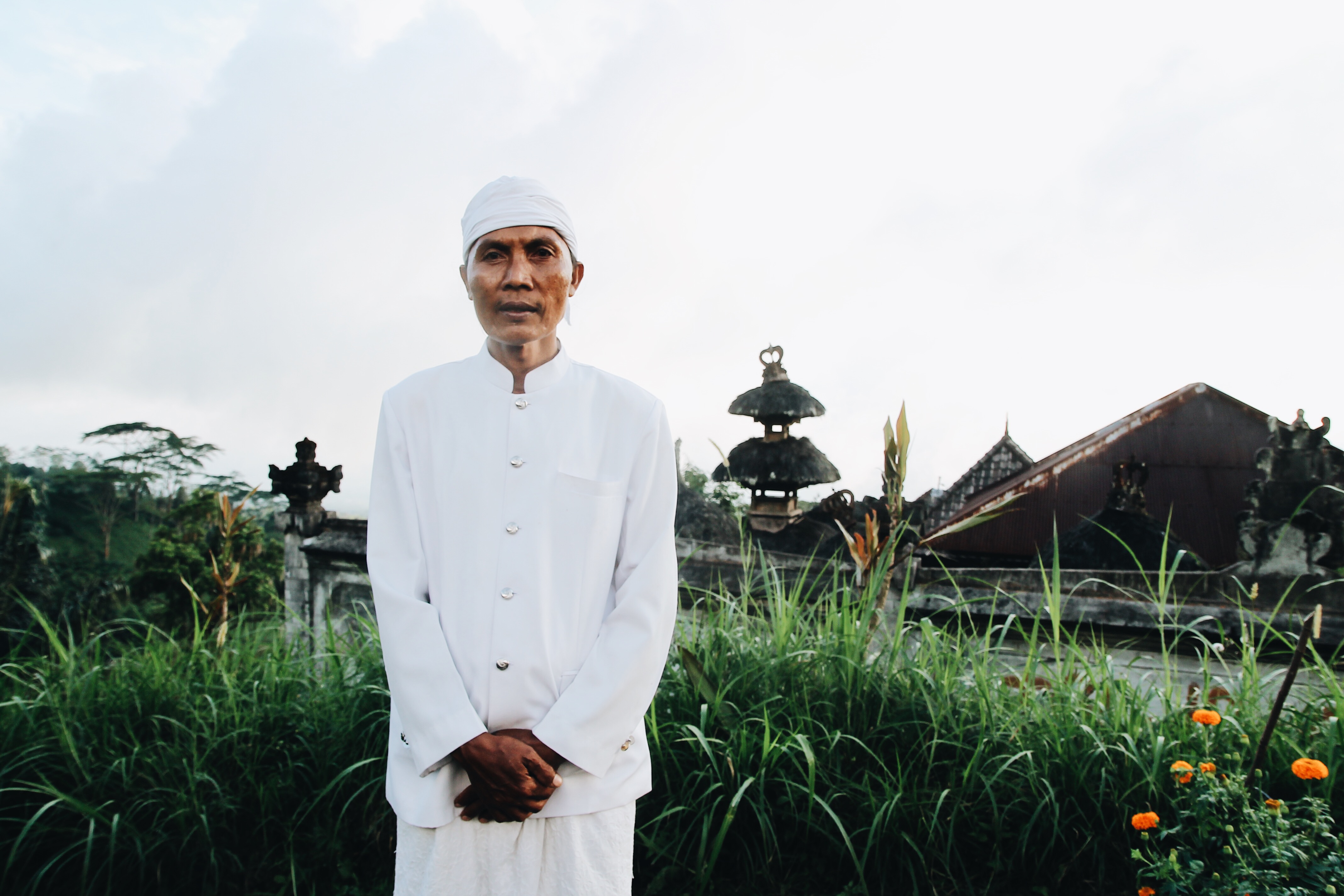Jro Mangku Kari still remembers carefully crossing over lava flows on bamboo poles to get down the slopes of the volcano. It was 1963, the last time Bali’s Mount Agung erupted, and he was 3 years old.
Back then, the only reason his village fled their homes in the face of the devastating eruption was because they ran out of food. The flying stones and surging lava that would ultimately kill more than 1,000 people could be dodged and avoided, they thought. Hunger, however, could not.
But this time around, this past September, Mangku Kari and his family left the village long before the eruptions began.
The Bali provincial government ordered the evacuation of their village, Temukus, as soon as the mountain began to rumble and small earthquakes were recorded. Villagers in a 10-kilometer exclusion zone were urged to evacuate beginning on Sept. 22, nearly two months to the day before the first eruption on Nov. 21.
After Mount Agung’s status was last month finally downgraded to the second-highest alert level, “standby,” and the exclusion zone was reduced to four kilometers, Mangku Kari and some of his neighbors have returned home — even as the volcano still continues to erupt, with the latest blast just days ago.

You may have heard of Mangku Kari before, though not by name. He was in a group of three Balinese priests whose story went viral after hiking to Agung’s crater on Sept. 29, just a week after the volcano was upgraded to the highest alert level: “danger.” The priests went up despite a government prohibition, wanting to check things out for themselves and conduct prayers.
Now, six months later, a fresh wave of Kari’s neighbors have again been evacuated, but this time, Kari has decided to let his faith, rather than government warnings, advise his actions. The priest and four other families from his village now refuse to leave Temukus, insisting they are in no danger.
Mount Agung and the media
Mount Agung’s activity over the past six months has been a roller coaster of flare-ups, ranging from heavy warning signs to small eruptions to near silence.
From September through December, Bali was regularly making world headlines, with international news outlets warning of a “HUGE,” terrifying, imminent explosive eruption. But as the sexiness of the story waned, global coverage of the volcano’s status all but died out, and tourists slowly returned to vacationing in Bali as usual.
But while holiday-makers are back on the beach, an estimated 1,650 Balinese — mainly from three different villages, Kesimpar, Bukit Galah, and Temukus — remain afraid to return home. While estimates of evacuees have changed near constantly, as many as 140,000 villagers are believed to have been evacuated when the volcano was at its highest threat level.
Six months after Agung’s initial stirrings, the danger of a massive eruption now feels to many as if it was over-hyped.
The truth is, with the primary tourist areas some 60-70 kilometers from the 3,031-meter-high volcano, travelers were never in real danger of falling rocks or toxic gases. In the past six months, the maximum extent of the exclusion zone set by Indonesia’s volcanology center was 12 kilometers. The airport, for comparison’s sake, sits 75 kilometers from the volcano.
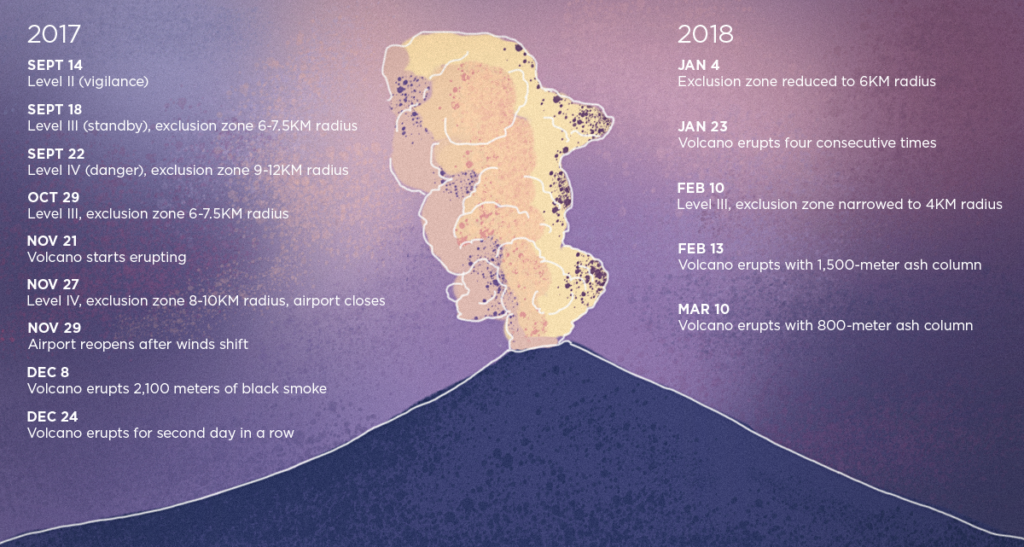
That’s not to say Agung’s not dangerous. Quite the opposite actually, but it’s a matter of proximity. For those living immediately around the volcano, legitimate fears for their physical safety have understandably preoccupied their thoughts since the volcano’s reawakening in September. They still do.
Temukus
Sitting just 4.2 kilometers from the volcano’s crater, nestled on the side of the mountain, Temukus, a town of 67 families and 220 inhabitants, remains one of the most dangerous areas around Mount Agung still inhabited.
While Agung’s seismic activity has certainly been decreasing since the volcano first stirred to life in September, with five or fewer tremors recorded each day — down from the hundreds recorded daily in September to December — the volcano currently remains on the second-highest alert level: “standby.”
Even now, a major eruption is not totally out of the question, and access in and out of Temukus is hard going.
As the crow flies, the journey to safety is just several kilometers down the road. But getting down those roads, especially with cold lava flows bringing giant rocks and whatever else is rolling down on your head, escape in the event of a large-scale eruption is far from guaranteed.
Arteries off the mountain have been largely obliterated by landslides brought on by the rainy season as well as lahars — destructive volcanic debris mudflows, also known as cold lava flows. So getting away from lava, landslides, or toxic gases, should they suddenly appear, would be no easy matter.
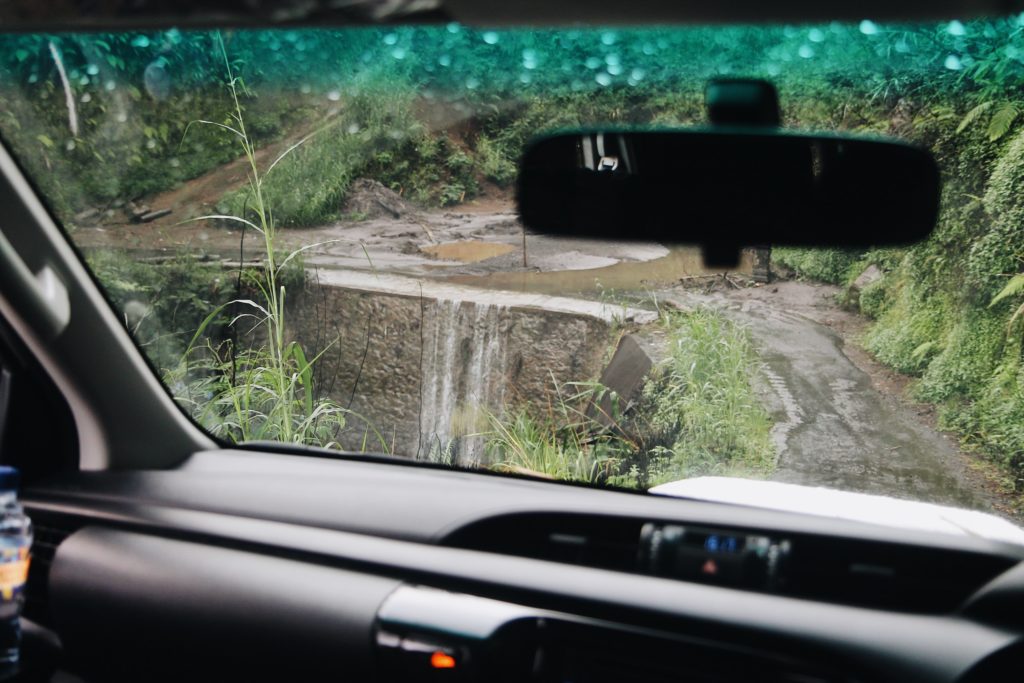
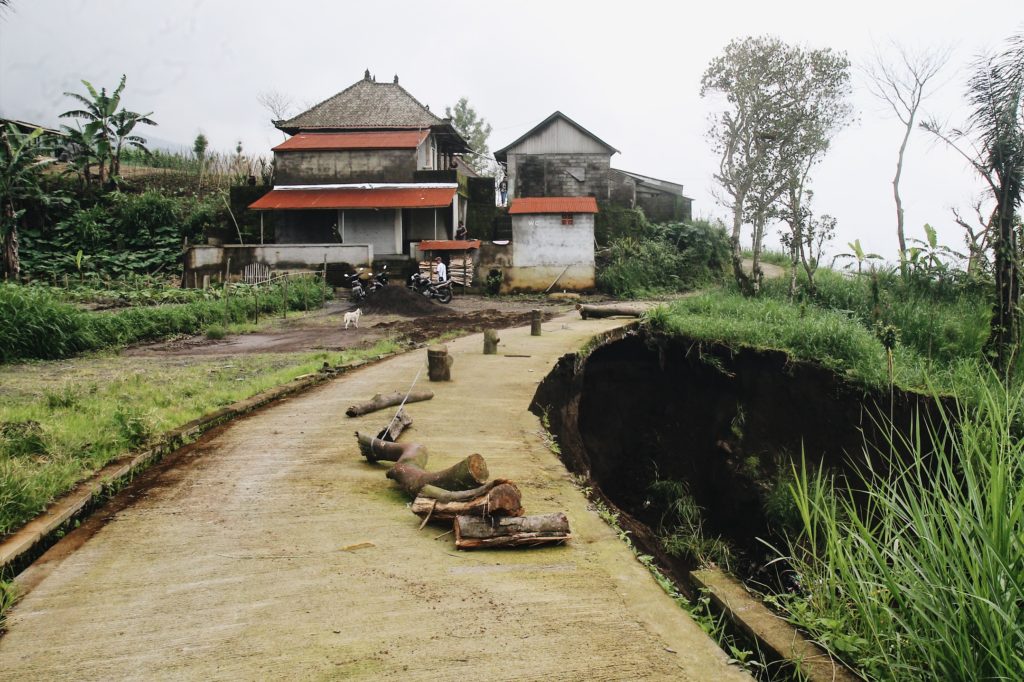
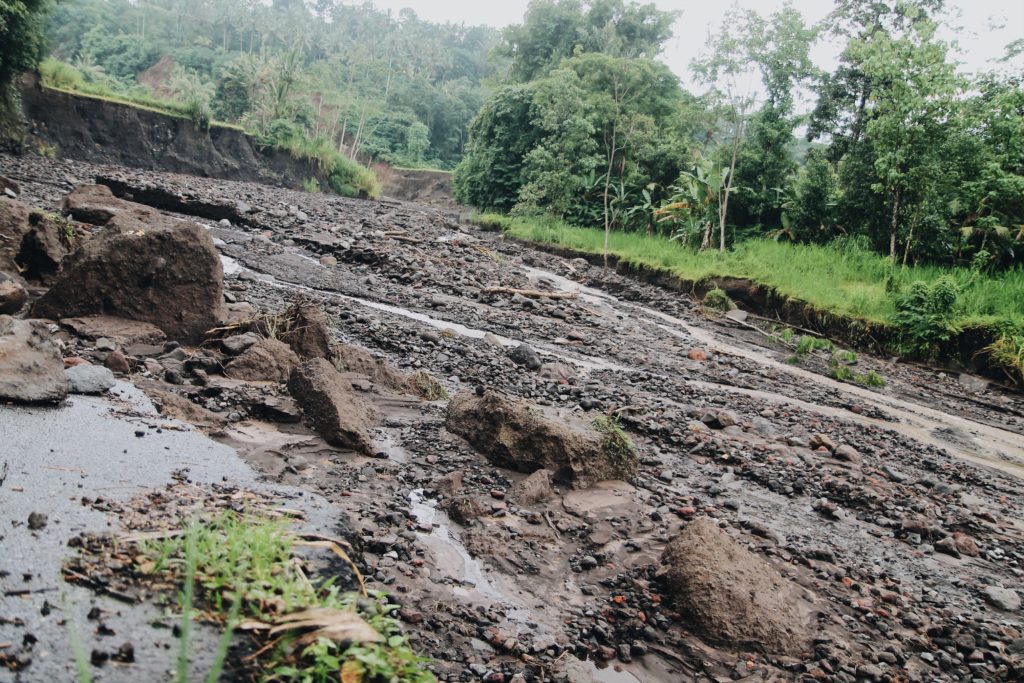
Temukus occupies a gray zone when it comes to evacuation status. As some parts of the village actually sit more or less directly on the border of the four-kilometer exclusion zone, the government has told villagers they can choose whether or not they want to return home or remain refugees and accept government aid.
It’s a near-impossible choice for many: Go home and risk your life (and the lives of your family), or stay at the camp, far from the place you’ve lived your entire life.
Even with the threat of a larger eruption still looming, a small handful of Temukus locals, like Mangku Kari, have decided to return home after months spent camping out at evacuation centers. Others have chosen a sort of in-between existence, returning to their villages to take care of their land during the day, then going back to the evacuation centers to sleep, their eyes shut tight only when safely out of the danger zone.
Camp life
Most of Mangku Kari’s neighbors from Temukus Desa, or central Temukus, which is comprised of just 20 families, have ended up in an evacuation center called Camp Sibakan.
After five months living in shelters, many of the residents of Temukus Desa returned home on Feb. 10 after the PVMBG downgraded the volcano’s alert status. But just three days later, the volcano erupted yet again, prompting most villagers to retreat back down the mountain.
The villagers had previously spent five months at a government-run evacuation center in Boga, situated in Karangasem regency’s Rendang area, but rather than return there, this time they decided to settle in nearby Sibakan.
There, an open-air, roofed area normally used for community gatherings by the local Balinese Banjar, a native ethnic group, has been converted into a living space for the indefinite future.
Two public halls, large roofed-rooms with tarps and cinderblocks as temporary walls, have enough room for 24 people in one, and 50 in the other.
Kadek Rimpi, 36, is living with her husband and two young children in the smaller communal space, where the structure’s sides are covered with a tarp and mattresses are clustered together in what amounts to one giant bed on the cement floor.
A stove is set up on a makeshift bamboo table with a mishmash of pots, plates, and containers, while another corner of the shelter houses various things meant to be kept dry, like motorcycle helmets, laundry, bags, and food. A line of outhouses has been set up outside the tent in a bid to keep things as sanitary as possible.
“The government informed us we could go back home. But then there was another eruption, so we evacuated yet again,” Rimpi told Coconuts Bali during a visit to Sibakan last week.
“We only return to Temukus for ceremonies, or other special reasons like that.”
An integral part of Balinese Hindu culture and a huge aspect of everyday life, if anything could bring evacuees back into the danger zone, it would be ceremonies.
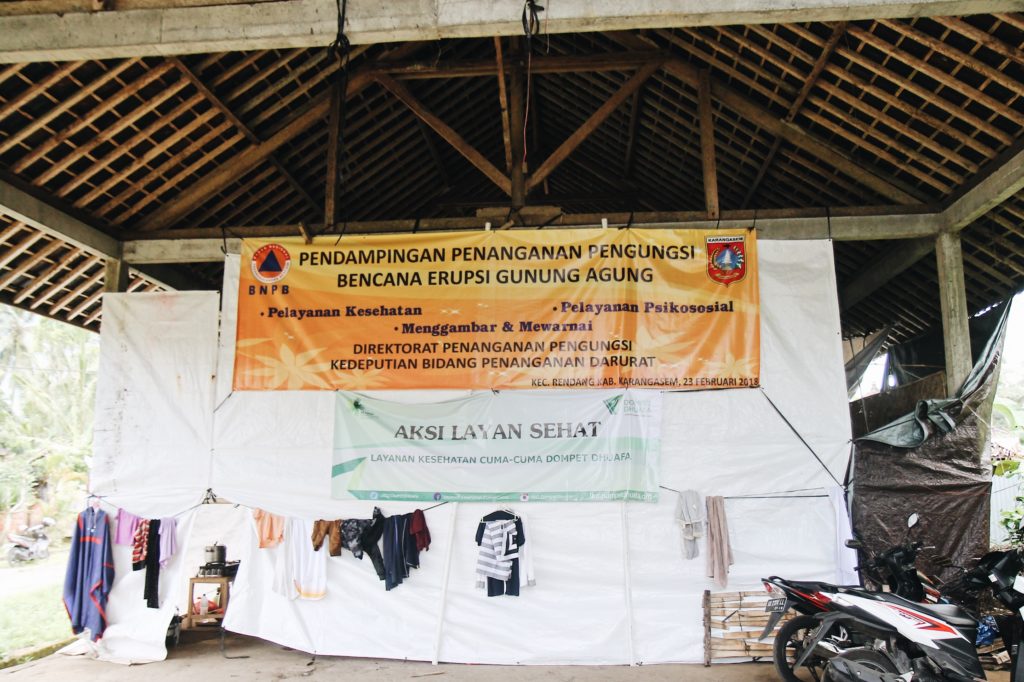

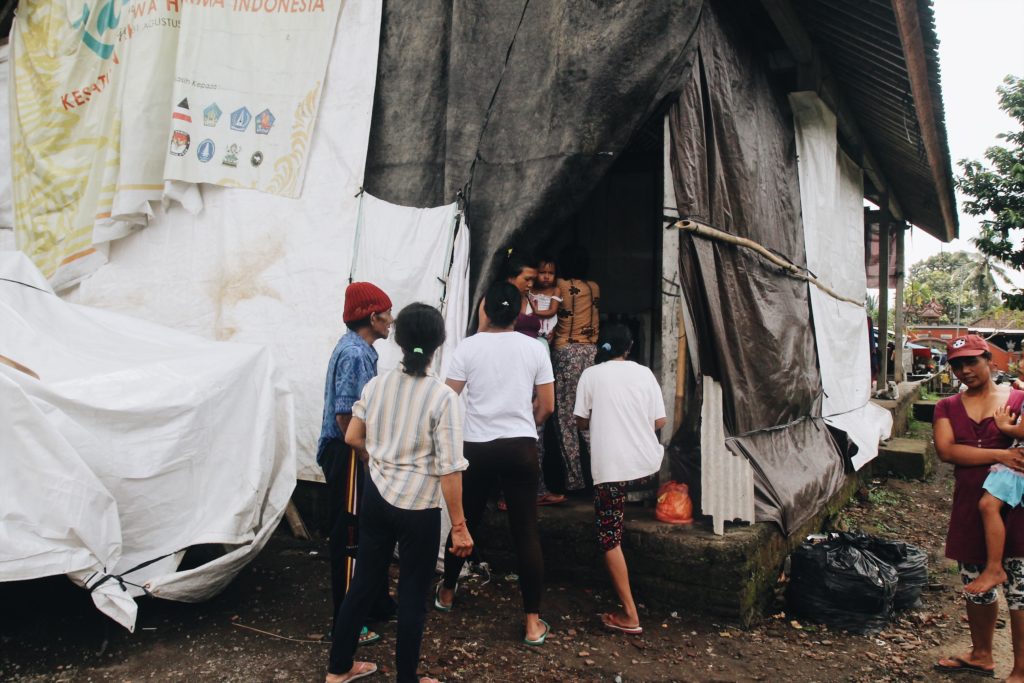
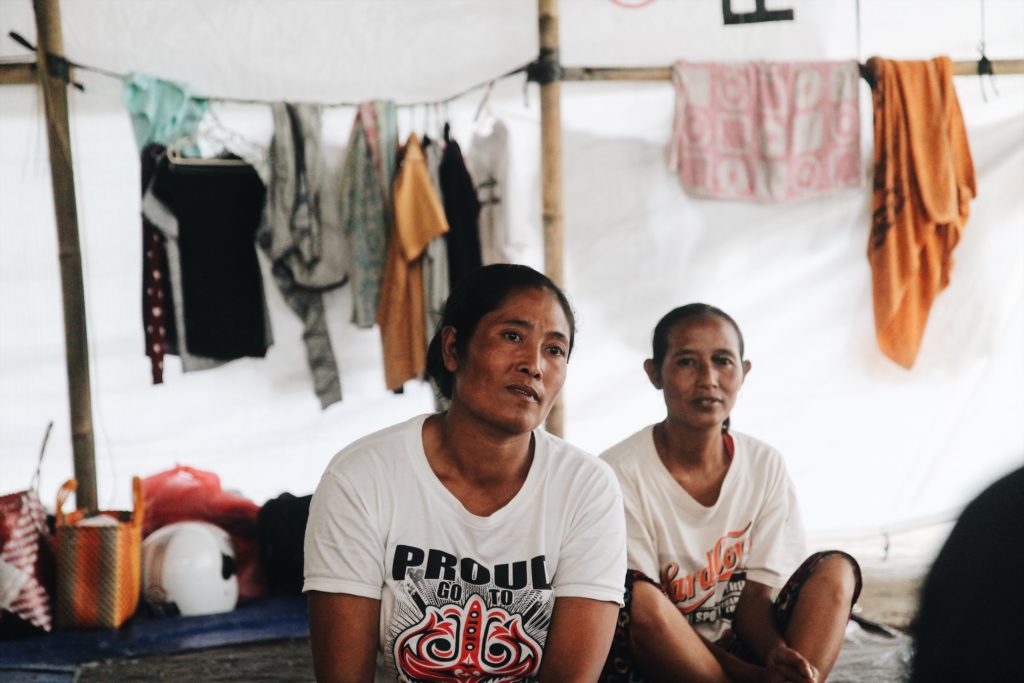
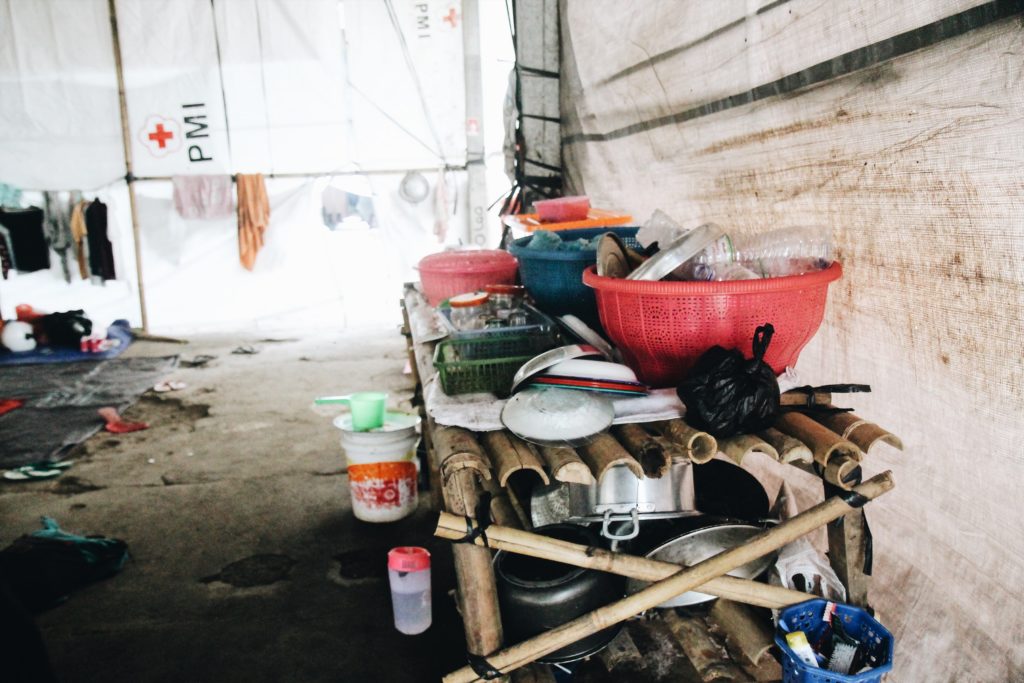
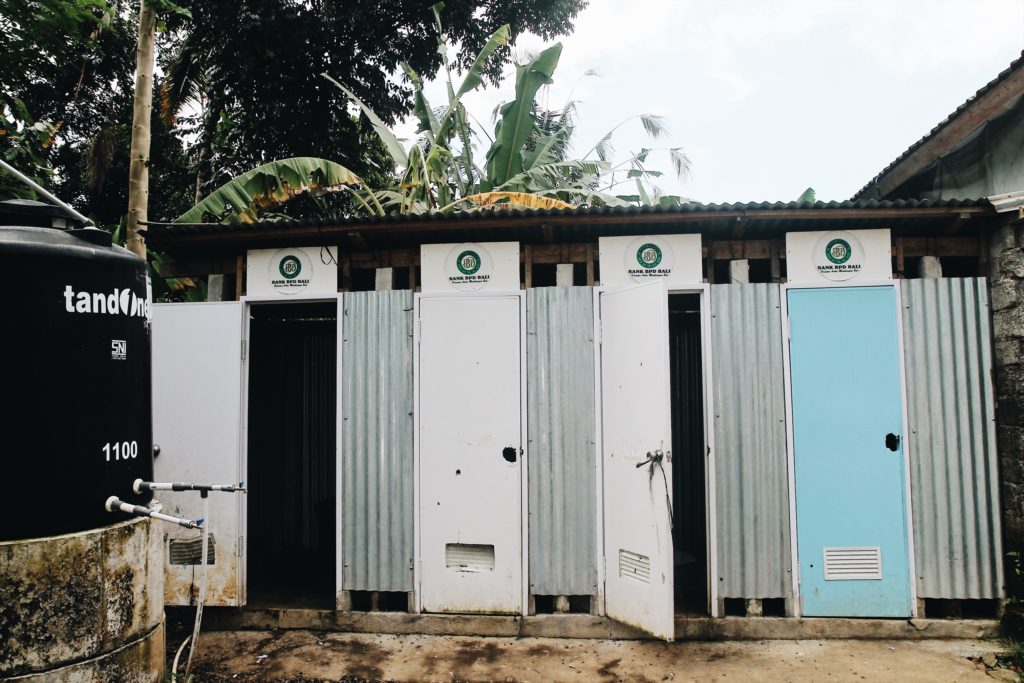
How long will Rimpi and her family stay in the makeshift shelter?
“Until it’s safe. We don’t feel safe in the village,” she says. “Even though the government has said we can go home, we would stay here for even months more, just to be safe.”
For Rimpi, it’s the thought of trying to get out of the village if something suddenly happened that has her refusing to take her family back home.
“If the roads were better, we would go,” the 36-year-old says with certainty, as she mixes a hot cup of instant coffee for her neighbor.
Attempts have been made by the government to try and fix the roads, but they have failed three times, with lahars and landslides continuously wiping out their efforts, says Rimpi.
The government supplies the camp with basic supplies like rice, vegetables, meat, and water. But Rimpi and her fellow neighbors are no charity cases, she insists.
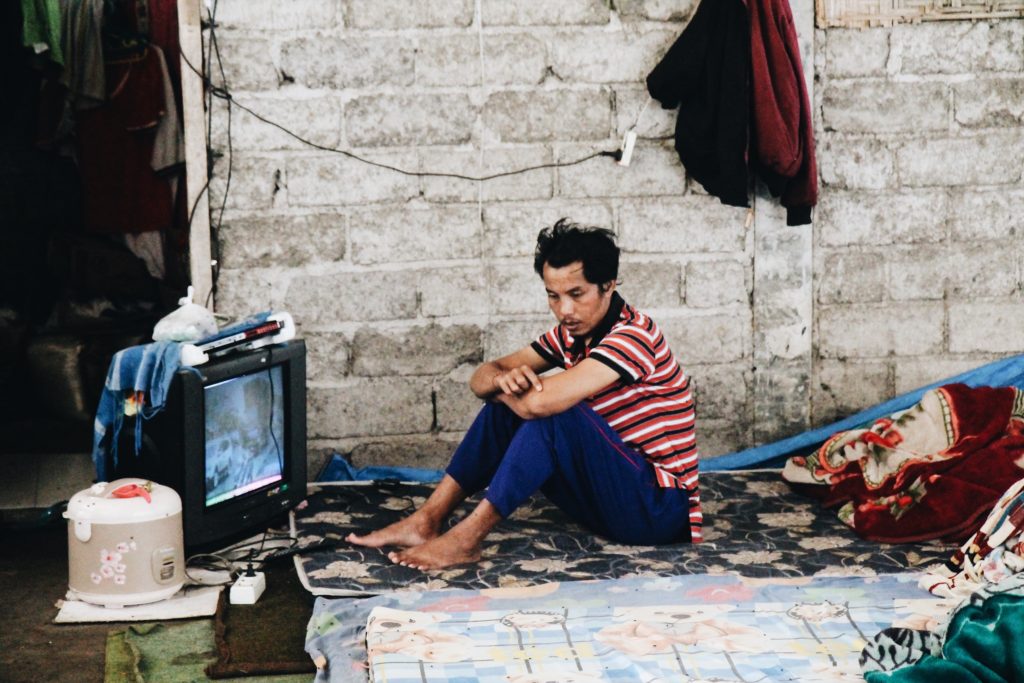
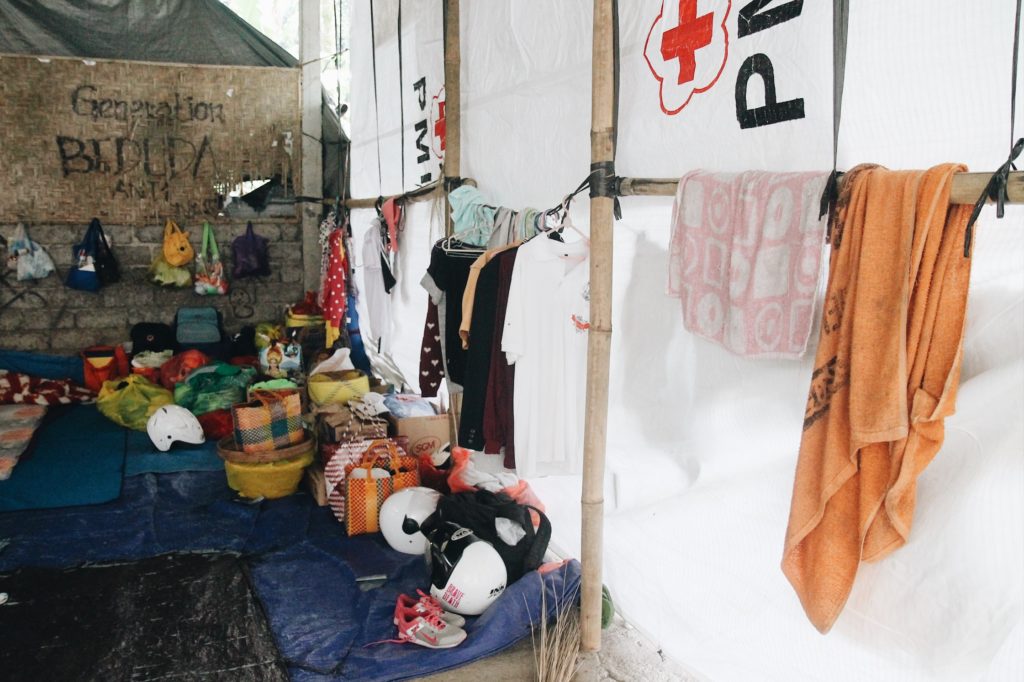
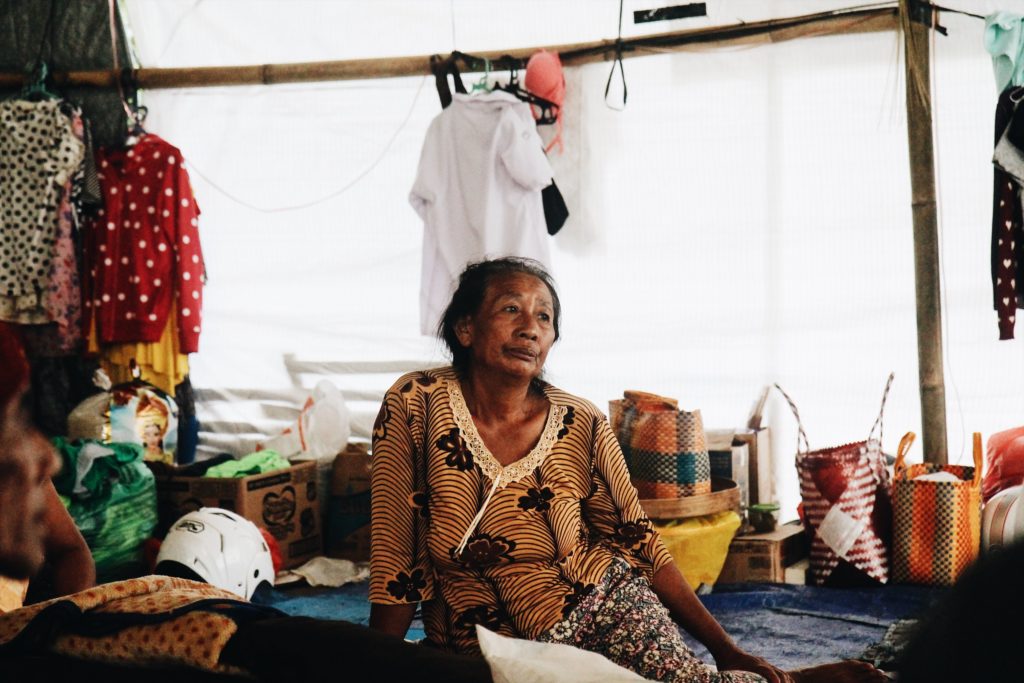
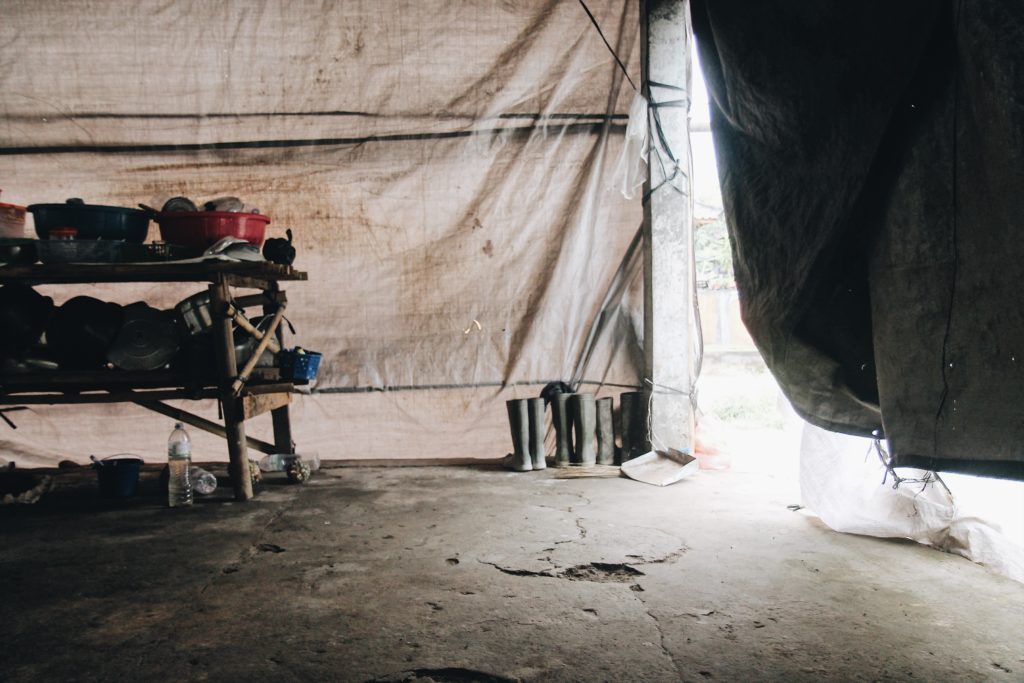
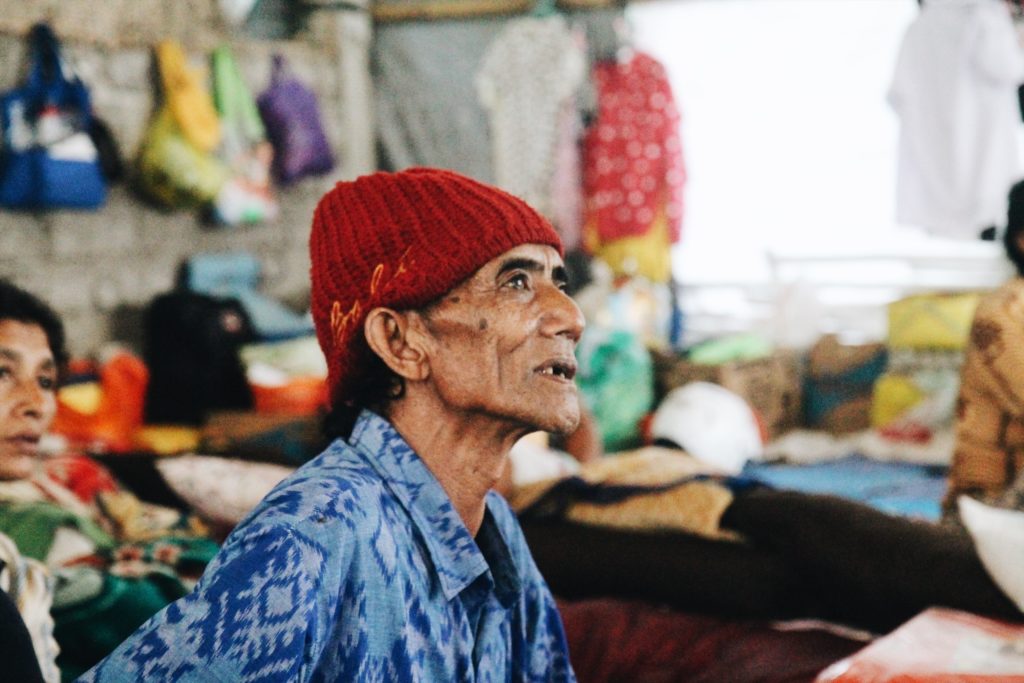
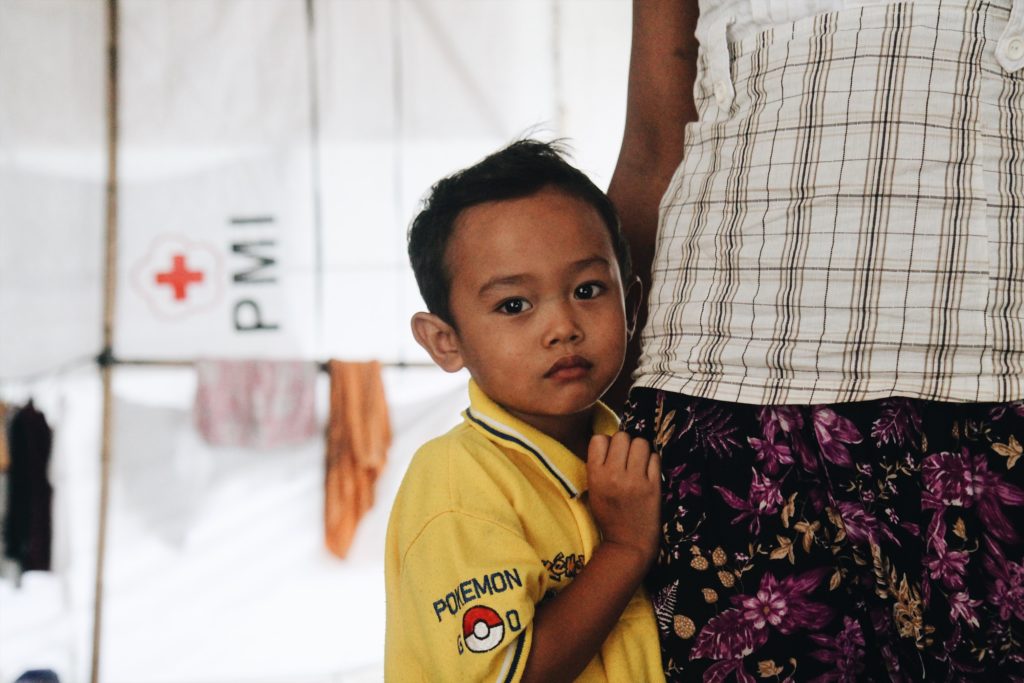
As with most villages surrounding Mount Agung, the vast majority of residents are farmers, predominantly tending to cattle, but also growing flowers for canang sari offerings, and harvesting chili to feed Indonesians’ strong appetite for spice.
Much of the flowers and chilis were choked out with volcanic ash over the past months, while the cows were sold in a rush at less than 50 percent of their normal value. Before, a cow could go for IDR15 million (US$1,090) a head, but in the panic to evacuate, some cows were sold by Temukus villagers for as little as IDR7 million (US$510) a head.
While the women stay at the camp during the day to take care of the children and do the cooking, cleaning, and other chores required for communal living, the men take odd jobs, mainly in construction, working long, back-breaking hours. Rimpi’s husband goes to nearby Klungkung every day for such work, leaving the camp at dawn and returning at dusk.
“As long as we are fit to work, we will take care of ourselves,” Rimpi said.
“We don’t want to rely on donations.”
A holy mountain
In Hindu majority Bali, Mount Agung is considered the head of Pulau Dewata (the Island of the Gods), with the Mother Temple, Besakih — the island’s largest and holiest temple — sitting just eight kilometers from the slopes.
Besakih was famously spared by the previous Agung eruption in 1963, with lava flows missing the temple by a matter of meters, a near miss widely believed to be an affirmation of the temple’s sanctity.
For Mangku Kari, the priest of Temukus, it’s that same faith that fuels his decision to refuse to leave now, even as the volcano spews ash over his garden and small quakes occasionally shake his bed.
“If you’re not brave to come back, you can remain evacuated,” Mangku Kari told Coconuts Bali during our visit to the village on March 4.
“My feeling is that it’s safe here now,” he said.
We hear the same thing from Mangku Kari’s son, Nengah Sindia, the future spiritual leader of Temukus. Sindia does construction work that takes him quite often to the island’s capital, Denpasar, but he stays in Temukus five days out of the week despite the volcano’s unstable condition.
Under Temukus’ traditional customs, Sindia will succeed his father as town priest once Mangku Kari retires, which will only happen when he can no longer physically carry out his duties. Not every Balinese village follows the same custom with their spiritual leaders, but with Temukus, it’s hereditary, and the lineage goes back centuries.
“My family has been here in Temukus since before the Majapahit era,” Mangku Kari said, referring to the Java-based empire that ruled Bali between the 13th and 16th centuries.
Sindia is the traditional village leader, or bendesa, of Temukus. So while his time hasn’t yet come to take over his father’s job as priest, his does play a guiding spiritual role for the village.
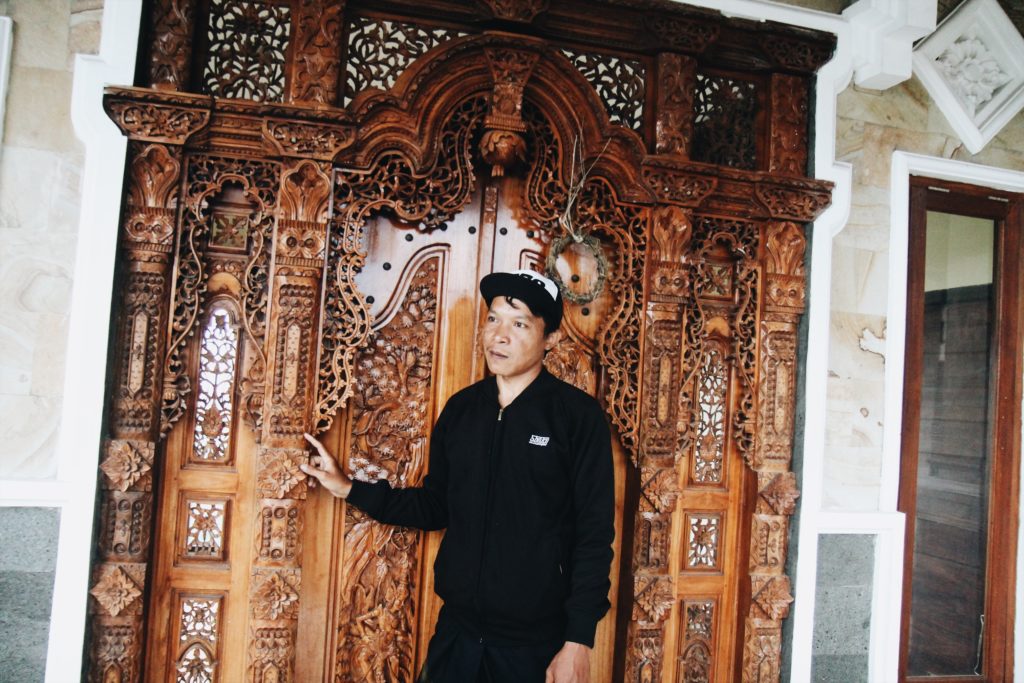
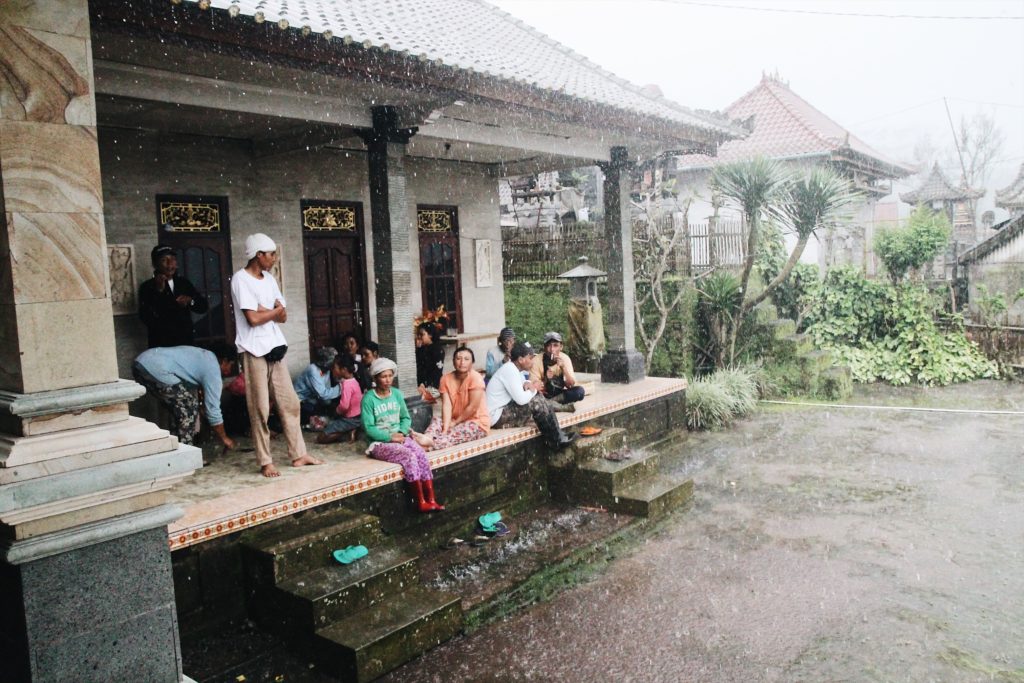
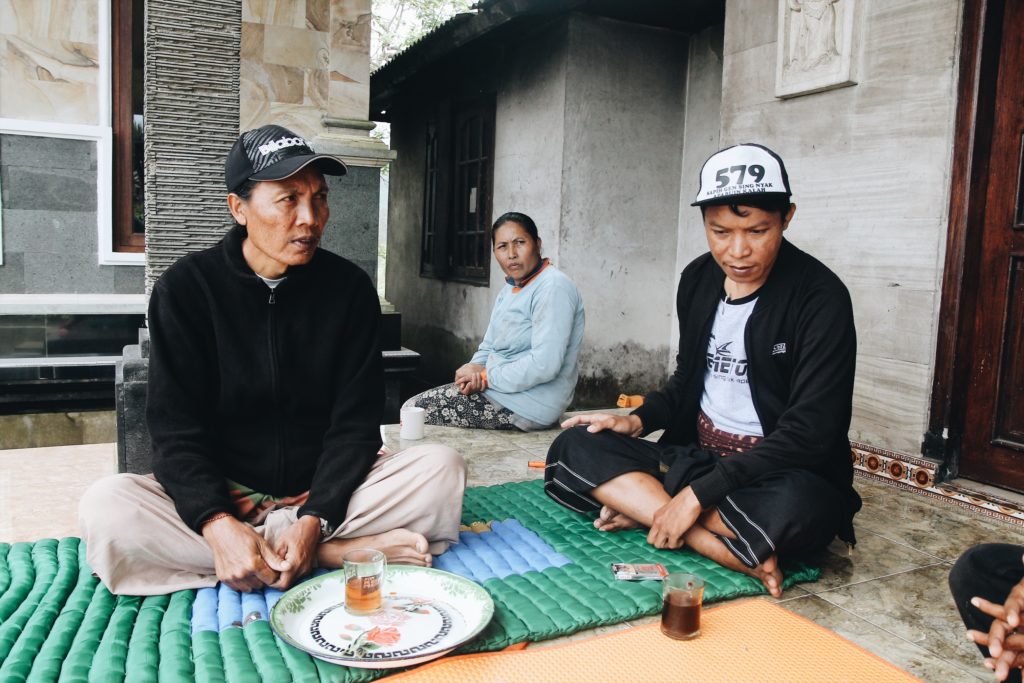
As a bendesa, Sindia is responsible for making sure villagers are abiding by traditional customs known as awig-awig.
“That’s why I come home,” Sindia said in a text message just days ago.
“As many as 32 residents living in Temukus Madya left [March 7] at around 6am because they felt a roar, felt earthquakes, and saw the condition of the Madya Bridge, which has not been repaired by the government,” Sindia explained.
Temukus Madya is a smaller, more far-flung part of the already remote town, with just 12 families.
“But my father and four other families who live in Temukus Desa still stay at home,” Sindia said.
“Only their beliefs make them comfortable to stay there.”
As well as tradition, another thing pulling Sindia home is a pilot project he’s working on in an attempt to diversify Temukus residents’ income beyond cattle, chili, and flowers: the harvesting of sereh wangi, or citronella fragrance, in what’s now likely some of the most-fertile soil in the world.
“I invited the whole village to join the project, but only 12 others have joined me,” Sindia said.
At the moment, that number has shrunk to six, as half of the Temukus residents involved in the pilot project are among those who fled.
An angry mountain?
Sindia and his father see Mount Agung’s reawakening as a commentary on the current state of affairs in Bali.
In Balinese culture, the concept of gotong royong is a guiding principle: the responsibility to help others and better the community.
“This principle isn’t being as respected as much anymore,” says Mangku Kari.
There is more of emphasis on money and less respect is being shown to the island than ever before, explains the priest.
“For example, a lot of money goes into ceremonies now. But it’s for show. Ceremonies have become more expensive, but the [spiritual] value has gone down.
“Another example, tourists climbing the holy Mount Agung bring up alcohol.
“We have evidence. Beer and wine bottles came tumbling down the mountain, carried down by lahars,” said the priest.
He also cited instances where he found used sanitary napkins littered on the side of the mountain, a massive taboo here. In Balinese culture, women are not even allowed to enter the inner temple when menstruating.
The fact that tourists are climbing the mountain at all sits poorly with the father and son.
“The holy mountain should not be open to the public for climbing. It should only be climbed for religious and customary purposes,” Sindia says.
So strong in this belief in Temukus that the village forbids the public from accessing the volcano via the trail that runs through their land.
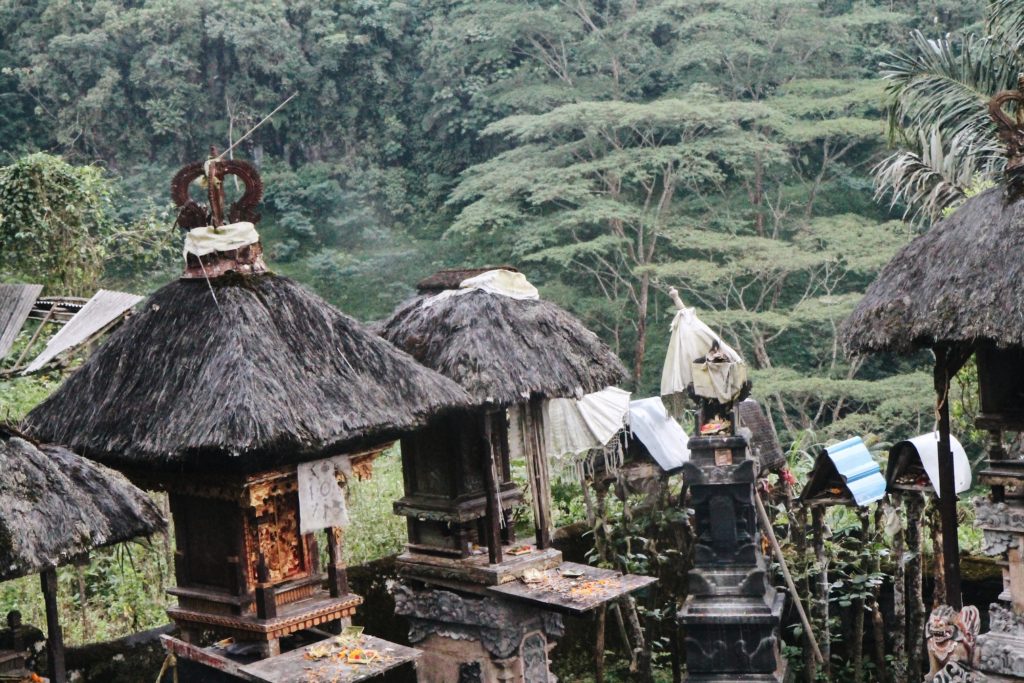
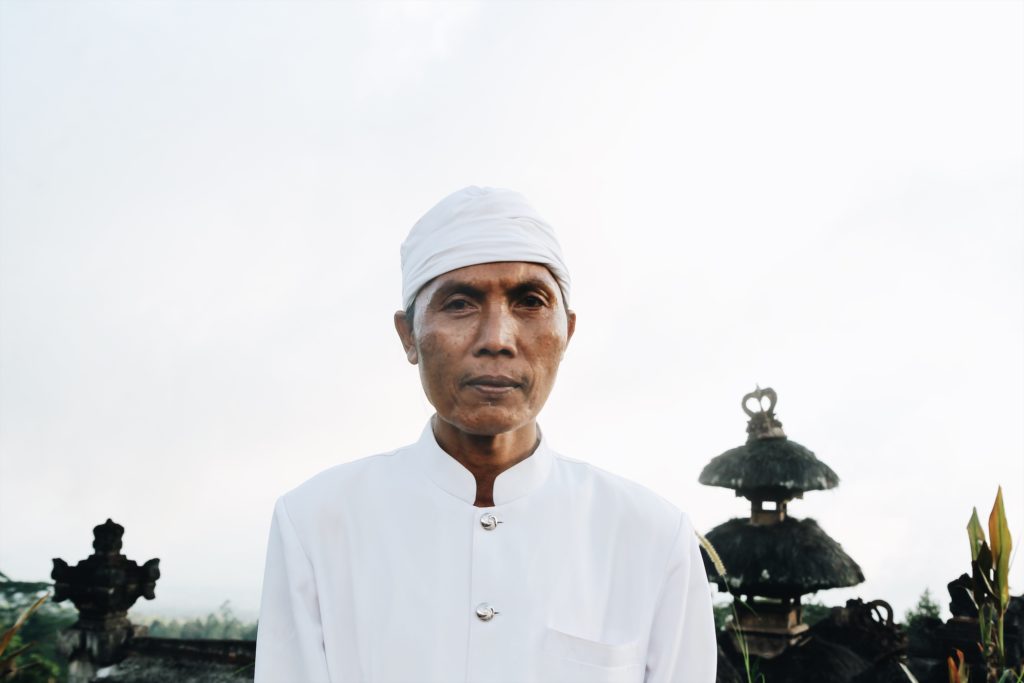
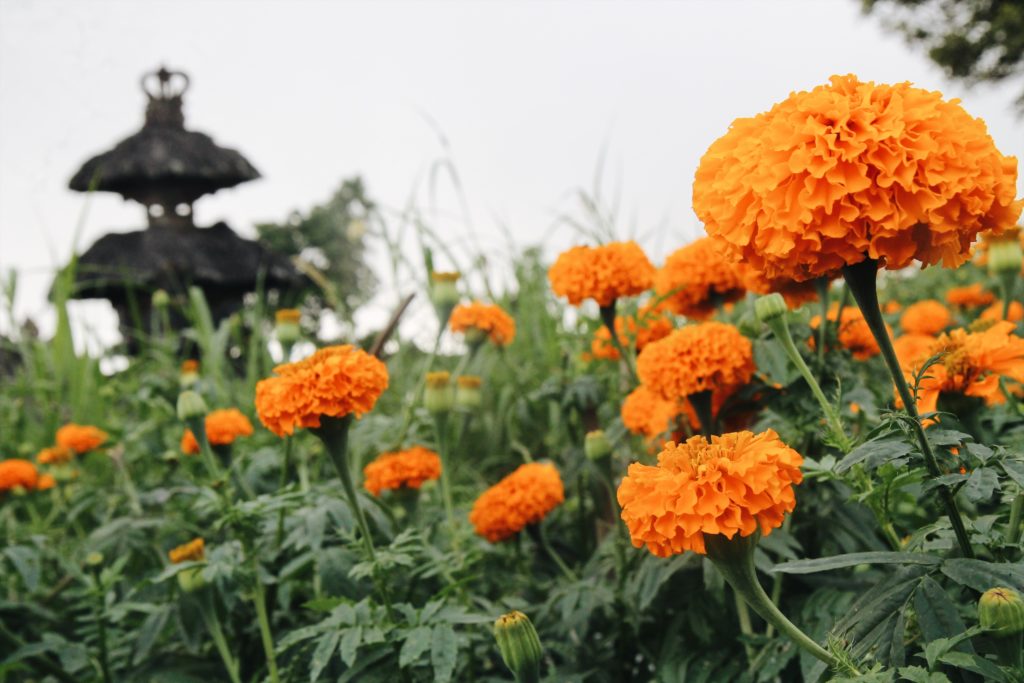
“But the blame is not just on tourists. The problem is also with local guides who come in from Denpasar and don’t have respect for the mountain,” says Sindia.
The guides just drop tourists off at the base at Pasar Agung, then send them on their way to climb up, without explaining anything about the volcano’s sacredness, he said.
Like his father, Sindia doesn’t believe that Agung will shake Bali with a huge eruption like the devastating one in 1963.
“Unless there are constant, non-stop earthquakes shaking us,” he says.
That would be the warning sign, according to both the priest and his future successor. In that case, both say they would be willing to pick up and evacuate their families again.
Rimpi and many of the other villagers evacuated at Camp Sibakan also see a connection between Mount Agung’s uneasiness and the state of the island.
But while faith is strong amongst Rimpi and her fellow evacuated neighbors, fear is the more powerful feeling.
“Hopefully Ida (Agung) won’t erupt like in 1963 so we can go home soon,” Rimpi says.
“But I realize this is nature, so all we can do is hope and pray.”
